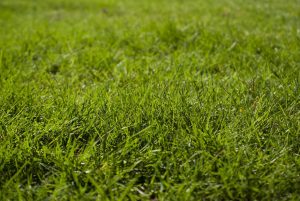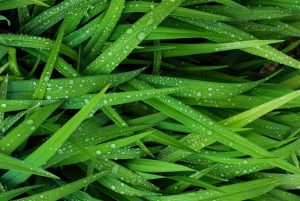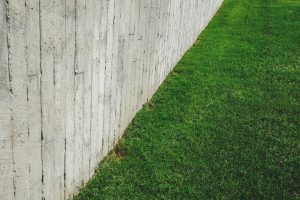Which Grass is Best? The Ultimate Homeowner’s Guide to Making Your Yard Beautiful
So, you’re wondering which grass to pick for your lawn. Aren’t we all?
What’s the difference between grasses anyways?
Don’t they all get the job done? The fact of the matter is not every grass was created equal. Looking for the best one? That answer depends on where you live.
Grasses are broken up into two sections: warm-season in the South and cool-season in the North. If you don’t quite fit into the North or the South, there is a Transitional Zone ranging from Virginia across the country through Southern California, requiring a blend of the two types of grasses.
So, if you’re asking yourself how to make your yard the place where the grass is always greener, consider taking a step outside to experience your climate with a new perspective.
Top 4 Kinds of Grass for the North

If you are a Northerner, then you know just how drastic your climate can be. From freezing winter times to hot summers, you’ve experienced it all. Here is a list of the hardy grasses that will survive along with you through thick and thin.
Fine Fescue
This cool-season grass is the finest blade on the block. This guy has the hardiness to tolerate the wildest fluctuations of hot and cold weather combined. While he thrives in the sun, he also makes his way in the shade, providing a good option for under tree coverage.
Due to its low tolerance for traffic, this fine grass may not be a good option for sports fields or parks. But who can blame him? We all hate traffic.
Here’s how you keep this guy healthy: once or twice a week (during summer conditions) water at least 1 inch throughout the area. Pretty low maintenance.
Kentucky Bluegrass
Bluegrass is a perfect fit for those of you living in a cool and humid region, seeing a little more rain than dry climates. He flourishes in cool weather, but once the extreme heat hits, count this guy out. He undergoes stress during hot weather, requiring more maintenance. Raise your hand if you can relate to this guy.
One thing to watch out for with Bluegrass is the possibility of thatching.
What is thatching? Thatching is when dead grass builds up under new growth and prevents the roots from getting the water and nutrients they need, acting like a sponge. The main causes of thatching are mowing too frequently (without catching the clippings) and fertilizing more than twice a year.
Basically, thatching is what happens when you love your lawn too much. So, take a step back and let your lawn breath.
Keeping Bluegrass healthy is as simple as can be. During drier periods, apply 0.5-1 inch of water every 5-7 days. Not too much to ask for right?
Ryegrass
Ryegrass is known for its rapid establishment rate. If you want your grass looking as green as soon as possible, consider making Ryegrass your go to. Ryegrass is highly adaptable and widely used, although he does prefer mild winters and cool moist summers.
His water needs are moderate—apply 1 inch of water 2 times a week to see his best performance.
Top 3 Kinds of Grass for the South

Now, if you live in the South, naturally your main concern is going to be your lawn’s heat tolerance. Here are the top three kinds of grass that will exceed even your ability to withstand the heat.
Bermudagrass
Bermudagrass has an excellent heat tolerance of up to 110F. In fact, he seems to do his best when the heat, whether it be a dry or tropical climate, is bearing down on him.
What makes this guy stand out the most is his superior drought resistance and his ability to withstand wear and tear better than any other grasses. If you are looking for tough grass to keep up with your family’s life, this is the grass for you.
Watering Bermudagrass can be done every 4-7 days, applying 1 inch of water to encourage a healthy root system that gives him that heat and drought resistance. Bermudagrass is so easy to maintain, you might forget he’s even there.
Centipede
Centipede grass is loved for its laid-back attitude and low maintenance. He is the perfect fit for Southern lawns, welcoming humid and tropical climates. If you’re looking for as little maintenance as possible, this is your guy.
Keeping Centipede grass happy involves watering at least 1 inch every 4-7 days.
St. Augustine
Last but not least we have St. Augustine. St. Augustine is a lover of the coast, embracing hot and tropical climates. He thrives in the heat and has excellent drought resistance.
St. Augustine needs a little extra love during dry seasons, requiring 0.5-1 inches of water as often as 3-6 days.
What about the Transition Zone?
The key to making your lawn last in the transitional zone is finding the right kinds of warm and cool season grasses to blend. While the list is not limited to this, one of the best options is Tall Fescue grass.
Tall Fescue
While he is considered a cool-season grass, Tall Fescue is a very good transition zone grass. He’s adapted to warm summers and moderately cold winters—perfect for transitional climate zones.
The best thing about Tall Fescue grass is its durability to wear. He is what you would call a “pretty tough guy”. This makes him the perfect candidate for parks, recreation areas, residential areas, sports fields, and more.
Not to mention he has good drought resistance! Apply 0.5 inches of water every 5-7 days and
you have yourself a long-lasting winner!

No matter where you live, picking the right grass can seem daunting. But, with the help of this guide, the decision is so easy, it’s practically already been made.
About Author: Ashley Roberts is a marketing content writer for Sports Field Solutions. She is an avid reader and enjoys rock climb, hiking, and anything outdoors. She loves reading about plants and learning more to further her gardening efforts.
References:
https://www.lowes.com/projects/lawn-and-garden/choose-the-right-grass-for-your-lawn/article
https://www.turfgrasssod.org/pages/consumer-resources/types-of-grasses/
https://www.countryliving.com/gardening/g19783061/different-types-of-grass/
